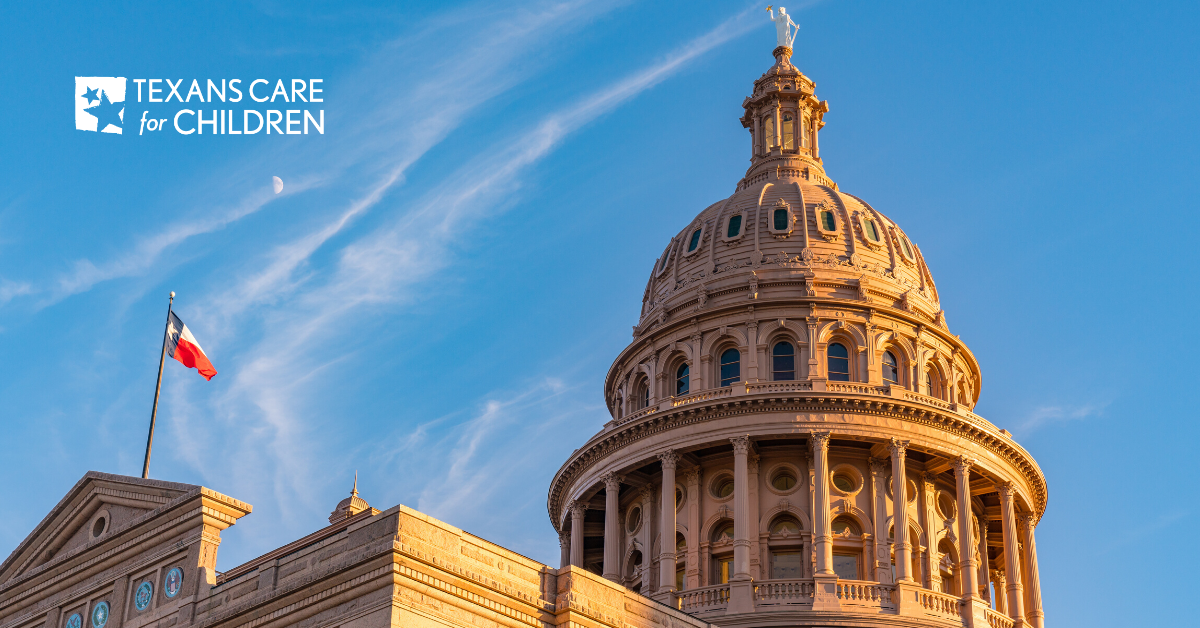This week, Texas leaders directed state agencies to propose ways to cut their current budgets by five percent.

We were pleased to see that their instructions exempted a long list of services for kids and families, including school funding formulas, school safety, behavioral health services, Medicaid eligibility, CHIP, Child Protective Services, foster care, the Texas Workforce Commission, and the Department of State Health Services. (For details on what’s included, take a look at the letter from state leaders and keep an eye out for further information.)
By excluding these programs from the cuts, state leaders recognized that funding services for kids and families will be particularly important over the next few years as Texans deal with the impact of the pandemic and the recession. As we said in the Austin American-Statesman after the budget announcement, the pandemic has already disrupted so much of the support that parents need for their kids, from doctor’s visits and school mental health services to high-quality child care and ECI therapy for toddlers with disabilities and developmental delays. For infants and toddlers, who are in a critical period of brain development, it’s especially important to provide strong support to minimize the impact of these disruptions.
While we were glad to see many key services exempted, the exemptions do NOT protect some important functions for kids and families, such as child abuse prevention, Medicaid provider rates, juvenile justice services, and the Family Planning Program. Cutting these investments would be painful for Texans and result in higher costs for the state down the road. (Similarly, we have deep concerns about the state’s decision this week to start scaling back some of the federal relief they had directed to subsidized child care, as we explained in the Texas Tribune and our new blog post.)
Furthermore, while the current economic outlook is quite gloomy, it’s important to recognize that there are still several possible outcomes for the state budget that Texas leaders will aim to finalize 12 months from now. Revenue projections for 2022 and 2023, which will be used for the next state budget, may improve. For the next budget and the current one, Texas leaders can use the Economic Stabilization Fund (the Rainy Day Fund) and pursue additional revenue, including federal funding. For example, Texas should maximize the federal funding available under the federal Family First Act (the 2018 reform of foster care funding) in order to invest in prevention services that keep kids safe with their families and out of foster care. Texas leaders should also accept federal funding for Medicaid expansion and urge Congress to provide additional aid to cities and states.
In other words, Texas leaders will have choices. I hope they will choose to help Texas kids and families when they need it most. We look forward to working with you to make sure that happens.



